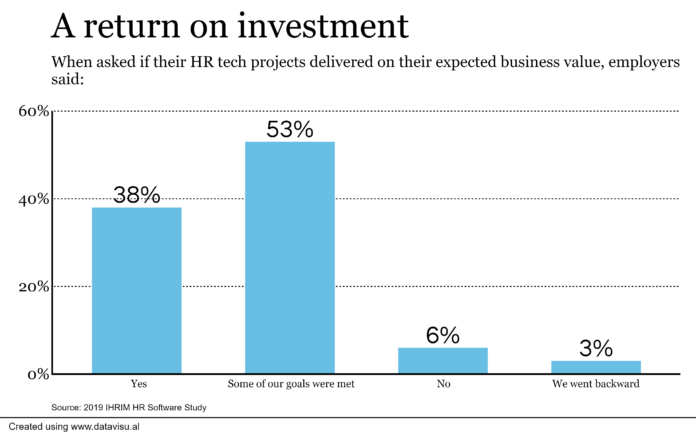Each spring, Stacey Harris spends considerable time and effort getting the Sierra-Cedar/Sapient Insights HR Systems Survey off the ground. The project is the HR industry’s longest-running, most distributed research effort, collecting insights on the adoption and deployment of HR technology, and the innovative tech strategies organizations are implementing.
This year–like most other things across the HR industry–the research had to navigate a few curveballs from the pandemic, says Stacey Harris, chief research officer of Sapient Insights Group, but the effort ultimately yielded valuable data about the rapidly changing industry. She will deliver the public debut of the 23rd annual report Oct. 27 at the virtual HR Technology Conference & Exposition®.
Click here for more information and to register for the free event.

Given the disruption of the pandemic, the survey launch was postponed a few weeks and the response time was also extended, Harris says. At the end of the summer, Harris typically is traveling throughout the country, getting face-to-face feedback on the early data and validating vendor feedback provided by customers. This year, however, she says, she’s had to get more “creative” to pursue that information: making many more phone calls, scheduling plenty of Zoom feedback sessions and conducting a record number of virtual vendor product briefings.
Overall, more than 2,500 people, representing 1,900 organizations, participated in the research, pushing the total organizations represented over 23 years to more than 20,000.
“We were humbled by the community’s effort to participate this year, amidst their own challenging environments,” she says.
In addition to providing the highlights of the research at HR Tech, Harris will also unveil new Voice of the Customer charts, focused on validated customer feedback across payroll, HR service delivery, learning, recruiting and business intelligence applications, she told HRE last month.
HR tech buyers, she says, need to be more focused than ever on what their workforces want–which has been significantly changed by the pandemic.
“Our workforces had high expectations [for HR technology] before the pandemic and, going forward, they will only continue to increase their expectations,” Harris says. “To return to work safely, they are expecting HR technology to be part of that equation.”
Related: Why health needs to be HR’s No. 1 priority amid return-to-work plans
That includes more options for cloud technology to facilitate remote work, touchless work environments, new safety measures, non-invasive contact tracing, enhanced access to benefits and new communication channels.
“HR leaders are at the center of balancing safety, wellness and productivity, and their HR technology investments need to keep this in mind,” she says. “Their HR technology decisions also have an oversized impact on their organizations’ ability to address critical issues such as bias and racial injustice, key issues that require as much attention as our approach to pandemic concerns.”
The impacts of the pandemic on HR tech will continue to evolve, Harris says, so, to keep up with these shifts, HR leaders need to hone their abilities to learn, adapt and communicate.
“Change is simply a part of our everyday lives now, and waiting for anything to go back to normal assumes there ever was a normal,” she says. “When in constant change, good communication becomes critical to helping both our employees and our leadership trust our efforts and focus on the important things they need to attend to at home and work.”



